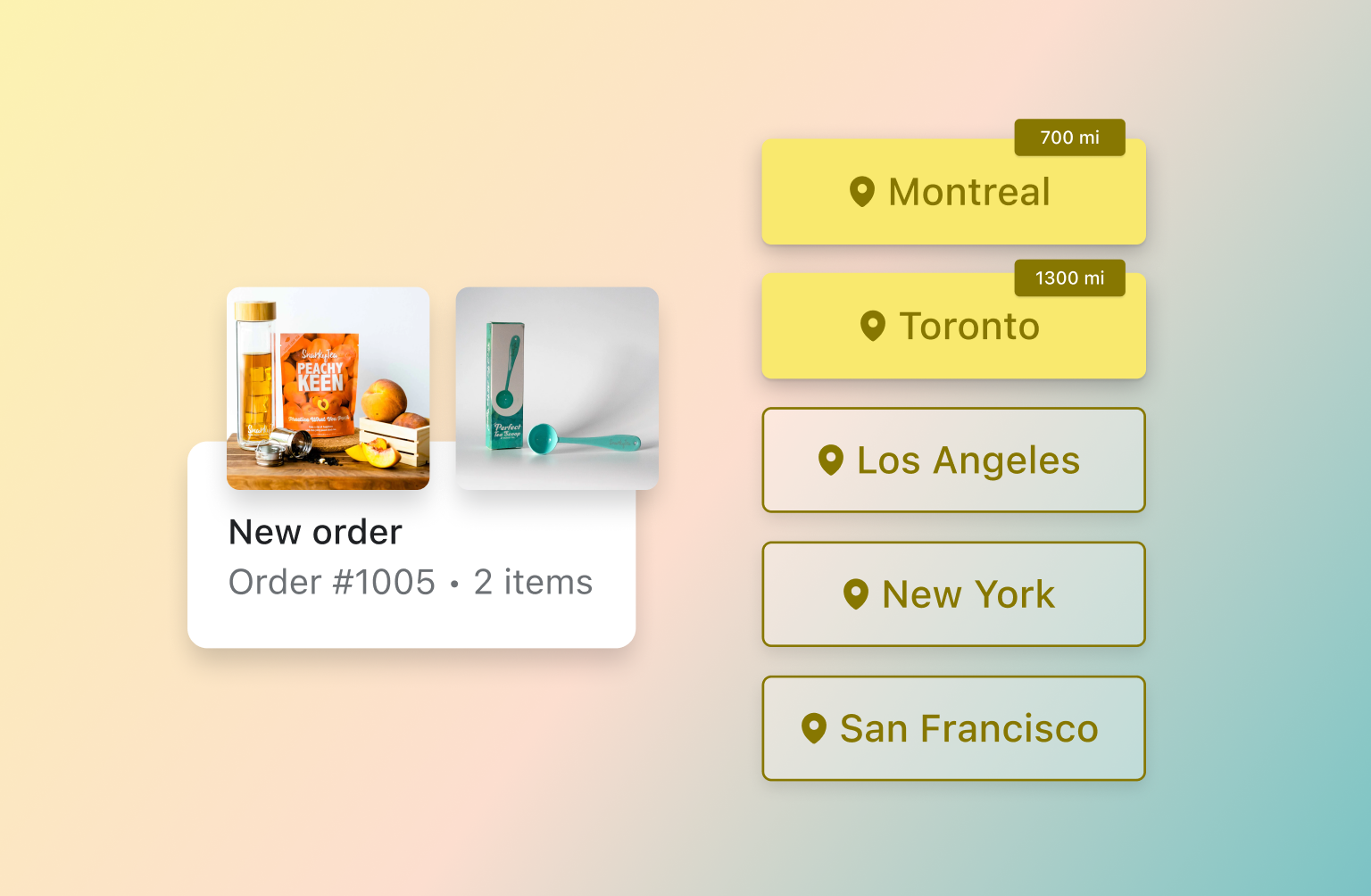However, managing fulfillment across multiple locations can make this process much more complex. You need to understand which locations have inventory available for all items in an order, which fulfillment location is closest to the customer, whether there is a fulfillment location in the customer’s destination country, and if this order can be fulfilled from your preferred locations.
With thousands of orders coming to your store, it would be difficult to go through this decision criteria for a single order, let alone thousands. The last thing you want is for a slow fulfillment process to hinder the growth of your business.
That’s why we’ve built smart order routing. With smart order routing, you can automatically route orders from the best fulfillment location, whether that’s a warehouse, a retail store, or a third-party logistics provider (3PL).
What is smart order routing?
Order routing is the process of efficiently allocating fulfillment of a customer’s order. With Shopify’s smart order routing, you can automatically prioritize the best location to fulfill an order based on a set of rules. Smart order routing is flexible and easy to configure, allowing you to choose from four prioritization rules available out of the box. These rules include: ship from the closest location, stay within the destination market, minimize split fulfillment, and use ranked locations. Once the rules are chosen, they can be ranked in order of priority with a drag and drop. As an order comes through, Shopify automatically checks which fulfillment locations have that inventory available, then applies the order routing logic set to determine the location that orders get sent to for fulfillment.
The benefits of smart order routing
Easier to scale: By automating the fulfillment process across multiple locations, you can reduce the need to manually choose fulfillment locations and fulfill orders more quickly as your business grows.
Flexible fulfillment options: Smart order routing lets you keep control over your fulfillment operations by setting and sequencing order rules tailored to your business needs, whether that’s prioritizing locations closer to your customer, prioritizing warehouse locations over retail locations, keeping shipments within the destination country, or minimizing split fulfillments.
Reduced shipping costs: By setting an order routing rule to fulfill and ship orders from the closest warehouse to the customer, you can save on shipping costs and pass those savings on to your customers.
Faster delivery times: Delivering products from the nearest fulfillment location to your customer can also significantly reduce transit times, resulting in faster delivery and increased customer satisfaction.
Increased customer loyalty: Faster delivery times and lower shipping costs can lead to increased customer satisfaction and loyalty, driving repeat business and positive word of mouth.
Tips for setting your order routing rules
There are four main rules that come with smart order routing out of the box. Based on the needs of your business, you may want to prioritize one rule over another. Here are some tips on how to decide the best way to prioritize your order routing rules.
Ship from the closest location

With this rule, Shopify automatically calculates the distance between your customer’s delivery address and your warehouse location, then prioritizes the location with the shortest distance. The benefit of this rule is, the shorter the transit distance, the lower the shipping costs will be. If you cover the cost of shipping, you are decreasing your costs. If your customer covers it, a lower shipping rate at checkout will more likely convert that customer, drive customer loyalty, and lead to repeat purchases in the future. A shorter transit time also means a shorter delivery time, which leads to a better customer experience.
Stay within the destination market

One exception to the above rule is if the closest warehouse to your customer resides in another country. In this case, you may want to add the "stay within the destination market rule" first. Shipping internationally often comes with paying duty or taxes, increasing the cost of shipping for you or your customer. Additionally, many shipping carriers need to hand off the packages to another shipping carrier in the other country, which can increase the likelihood of a package being lost or of unreliable tracking information. If you do operate in multiple geographies, you may want to prioritize this rule in order to avoid these issues.
Minimize split fulfillments

With multiple warehouses, you will have inventory split across multiple locations, which means you may not have all the products in one place to fulfill an order. With this rule, the order will be routed to the location that does have most of, if not all, of the order items in one place. By minimizing split fulfillments, you are paying to ship an order just once instead of paying for multiple shipments for split orders.
Use ranked locations

This order routing rule lets you rank your fulfillment locations. For example, if you have both warehouses and storefronts, you may want to prioritize your warehouse locations over your storefronts. If the items are not available in your warehouse, then it may make sense to fulfill that order from your storefront as a last resort. Another way to prioritize your fulfillment locations may be based on your warehouse costs. If one warehouse charges more to store inventory, you may want to get that inventory off those shelves more quickly. With this rule, you can also group your preferred locations, so they have the same ranking. If locations A, B, and C are equally preferred to locations D, E, and F, you can give the A, B, C group a #1 ranking and the D, E, and F group a #2 ranking.
Shopify’s smart order routing is a powerful tool that can help you optimize your fulfillment process, reduce shipping costs, and deliver products faster to your customers. By automating the fulfillment process across multiple locations, your business can scale more easily, while still maintaining control over your fulfillment operations.





